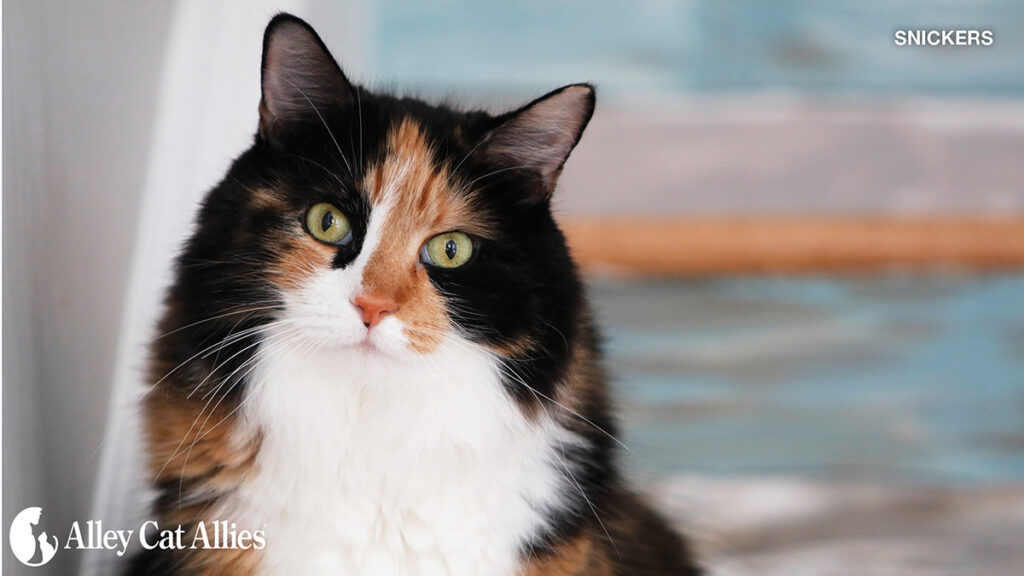A microchip is as tiny as a grain of rice, but it can save a cat’s life! May is a month dedicated to educating all cat caregivers about the lifesaving importance of microchipping cats. That doesn’t just apply to cats who live indoors—community cats, or unowned cats who live outdoors, benefit just as much from a microchip.
The fact is that animal shelters are still very dangerous places for cats and kittens, especially community cats who generally are not socialized to people and cannot be adopted. Beyond shelters being a perfect storm of stressful stimuli for cats–with their unfamiliar sights, sounds, and smells—too many shelters still operate with archaic, lethal policies. Many cats who enter their doors will be killed.
But a microchip—and a policy for immediate scanning—help ensure cats can be reunited with their families if they are ever impounded. For community cats, caregivers and Trap-Neuter-Return (TNR) organizations can register microchips with their own information so animal control knows exactly whom to contact to bring the cats back to their outdoor homes.
Our Microchips Save Lives campaign is all about spreading education and awareness to encourage all who care for cats to have them microchipped and, equally important, keep their registered information up to date.
Alley Cat Allies’ Plan to Scan® campaign educates veterinary professionals, shelter staff, and animal control officers to always scan a cat for a microchip the moment she enters their care. Because the sooner a cat is scanned, the sooner she can go home.
Even just browsing the news on a typical day, you’ll find incredible stories of reunion made possible thanks to the scan of a microchip.
Recently, Snowball in Fort Wayne, Indiana, was able to reunite with his family after just nine days thanks to his microchip. The local animal control organization took the exact right step and scanned Snowball for his microchip immediately.
And after almost four years apart, 14-year-old Oliver was brought back into the arms of his person in Bluffton, South Carolina. The reunion was a long time coming and was only possible because Oliver was microchipped and scanned.
In Arkansas, two women and a local veterinarian worked together to scan a Russian blue cat and contact the people registered to his microchip. That is how Sam’s family discovered he was alive and well after five years missing—and far from their Nevada home. Sam has since been reunited with them.
Microchips make a critical difference in the aftermath of disasters as well. When Hawaiian cat Mahina was displaced by the chaos of the historic Maui wildfires last year, her family reported her missing but could not find her before they relocated to the mainland. Thanks to her microchip, Mahina was identified after 100 days—and is now finally back with her loved ones in their new home in Montana.
Alley Cat Allies is always developing new resources to make it quick, easy, and fun to educate your community about microchipping and scanning. This Check the Chip Day, make a commitment to hang our new Plan to Scan® and Microchips Save Lives posters in veterinary offices, shelters—anywhere. You can also grab the new postcards of our Plan to Scan® and Microchips Save Lives information. It’s lifesaving knowledge literally in the palm of your hand!


